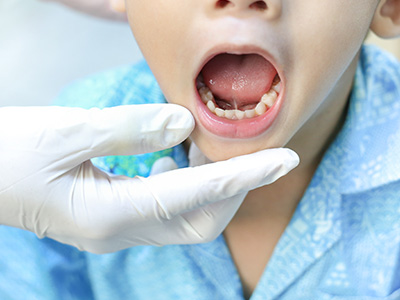
Our Office
620 South Dora Street
Suite 205
Ukiah, CA 95482
Visit Us Online
A frenum (also known as a frenulum) in the oral cavity is a fold of tissue connecting moveable soft tissue such as the lips, cheeks or tongue to the fixed tissue next to the teeth and floor of the mouth. It can contain some muscle fibers as well.
The major frena inside the mouth are located in three specific locations. The first one is the maxillary labial frenum, which connects the inside of the upper lip to the gum tissue above and between the front two teeth on top. The second, or mandibular frenum, is located inside of the lower lip, attaching to the gum tissue that is below and between the front two bottom teeth. The third is the lingual frenum, which is located on the underside of the tongue, connecting it to the floor of the mouth.
In most cases, these frena are anatomically normal and do not limit function or adversely affect the teeth or surrounding tissues. However, there are situations where they are too large and strong, and a surgical procedure known as a frenectomy is required. A maxillary labial frenectomy is the most common type of frenectomy performed. This procedure is typically necessary when a large and ropey frenum is attached too close to the tops of the teeth or extends too far towards the roof of the mouth, resulting in a space between the two front teeth, keeping the teeth apart, or affecting the integrity of the gums and bone between the front two teeth. Likewise, when an abnormal frenal attachment is present on the underside of the tongue, it impairs normal speech and oral function. Being "tongue-tied" is the phrase that is often used to describe this type of situation. In these cases, the oral and maxillofacial surgeon also performs a simple surgical procedure to release the frenum and facilitate easier and more normal function.